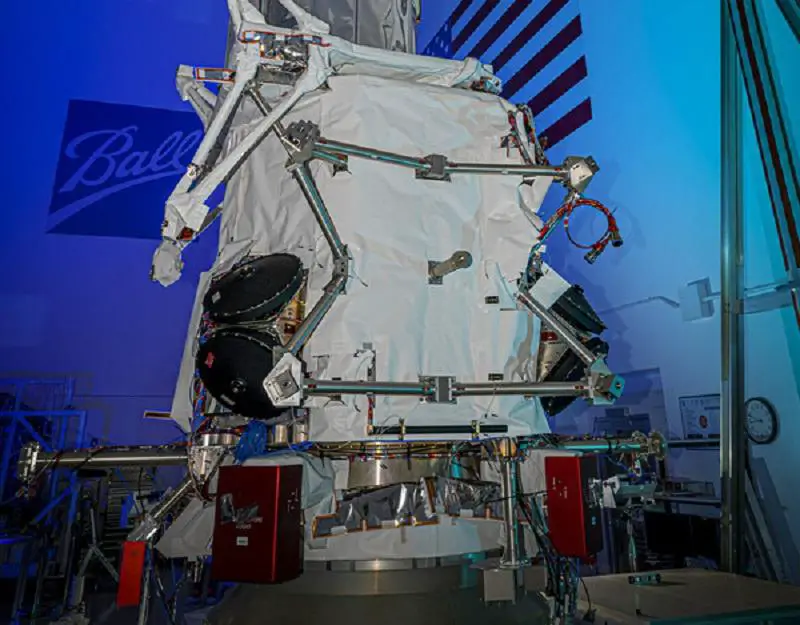Ball Aerospace completed the spacecraft bus for the Weather System Follow-on-Microwave (WSF-M) satellite, the U.S. Space Force’s next-generation operational environmental satellite system. Ball also finalized environmental testing on the Microwave Imager (MWI) instrument and has started final space vehicle assembly, integration and testing. Upon delivery, WSF-M will provide mission data to Department of Defense’s (DoD) environmental prediction systems that support all warfighter domains. In addition, it will broadcast real-time, actionable environmental intelligence to on-going military operations across the globe. At the heart of the WSF-M payload is the Ball-built MWI sensor that takes calibrated passive radiometric measurements at multiple microwave frequencies to measure sea surface winds, tropical cyclone intensity and additional environmental data. The ECP sensor will provide critical space weather measurements. WSF-M was designed to mitigate three high-priority DoD Space-Based Environmental Monitoring (SBEM) gaps: ocean surface vector winds, tropical cyclone intensity and the space weather gap, low Earth orbit (LEO) energetic charged particles. It will also address three additional SBEM gaps: sea ice characterization, soil moisture and snow depth. Ball Aerospace was recently awarded the contract modification to develop and build the second WSF-M space vehicle, expected to be completed by late 2027.
“The nearly simultaneous completion of the spacecraft bus and instrument testing mark a significant milestone for the WSF-M program,” said, Hope Damphousse, vice president, Strategic Operations, Ball Aerospace. “We are moving forward with spacecraft integration of the MWI sensor, along with a government-furnished Energetic Charged Particle (ECP) sensor, which will be followed by a suite of space vehicle performance and environmental tests.”
Ball Aerospace has played key roles on numerous operational weather satellite programs. Its Ozone Mapping and Profiler Suite (OMPS) instruments are operating on the Ball-built Suomi NPP and NOAA-20 satellites, launched in 2011 and 2017, respectively. OMPS is also on board the Joint Polar Satellite System-2 (JPSS-2), which launched on November 10, 2022. Ball is on contract with NASA to build two additional OMPS instruments for JPSS-3 and JPSS-4. The Ball-built Ion Velocity Meter (IVM) space weather sensors are flying on five of the six Constellation Observing System for Meteorology, Ionosphere and Climate-2 (COSMIC-2) satellites, a joint program with the U.S. Air Force, U.S. Space Force, Taiwan’s National Space Organization, NOAA and the University Corporation for Atmospheric Research that launched in 2019. Powered by endlessly curious people with an unwavering mission focus, Ball Aerospace pioneers discoveries that enable our customers to perform beyond expectation and protect what matters most. We create innovative space solutions, enable more accurate weather forecasts, drive insightful observations of our planet, deliver actionable data and intelligence, and ensure those who defend our freedom go forward bravely and return home safely.
Ball Corporation supplies innovative, sustainable aluminum packaging solutions for beverage, personal care and household products customers, as well as aerospace and other technologies and services primarily for the U.S. government. Ball remained a family-owned business for over 90 years. Renamed the Ball Brothers Company in 1922, it is best known for manufacturing fruit jars, lids, and related products for home canning. In 1998 the Ball Corporation moved its corporate headquarters from Muncie to Broomfield, Colorado, where its oversees global operations as a manufacturer of metal food and beverage containers, as well as a manufacturer of equipment and supplier of services to the aerospace industry. Ball Corporation and its subsidiaries employ 24,300 people worldwide and reported 2021 net sales of $13.8 billion.















